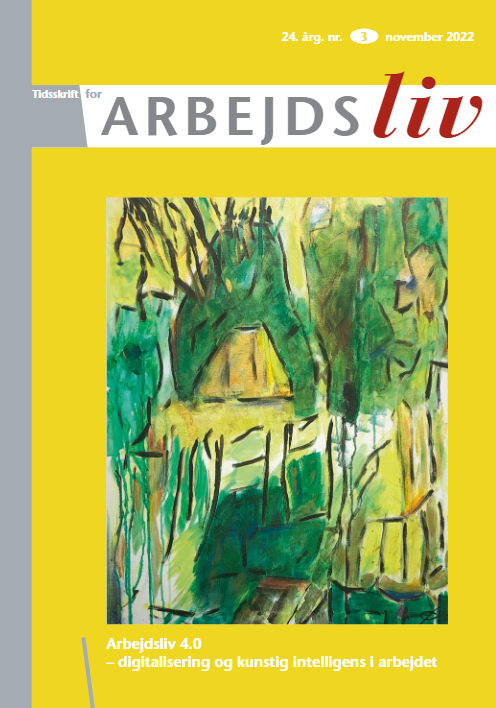When your manager is an app: Who has the responsibility of the Health and Safety of young workers in the platform economy?
DOI:
https://doi.org/10.7146/tfa.v24i3.134745Keywords:
Beskæftigelsesrelationer, Arbejdsmiljø (OSH), Digitale arbejdsplatforme, Forebyggelse, UngeAbstract
In 2021 the health and safety at Nemlig. com made headlines in Denmark. During the same period the European Commission focused on employment conditions and regulation of digital work platforms, and the Danish Minister of Employment stated that there must be “orderly conditions” in all parts of the Danish labour market. This article explores how young platform workers experience employment relations and responsibility for Occupational Safety and Health (OSH) in the platform economy. The study is based on 14 qualitative interviews with Danish young workers (age 18-30) who find work through digital work platforms. In the analysis of the data material, Rasmussen’s classic risk model “drift to danger model” is used (Rasmussen, 1997). The European Agency for Safety and Health at Work assert that the placement of responsibilities for OSH in the platform economy is challenged by the unclear categorisations of employers, employees and self-employed, and that existing labour law and OSH legislation might be inapplicable. Even though platforms position workers as self-employed, the study shows that the young workers rarely perceive themselves as being self-employed and assume that the platforms take care of OSH. When operating in a grey zone between employees and self-employed, the young platform workers risk being left without protection and societal resources for improving their safety and health at work.
Downloads
Published
How to Cite
Issue
Section
License
Copyright (c) 2022 Forfatteren og tidsskriftet i samarbejde

This work is licensed under a Creative Commons Attribution-NonCommercial 4.0 International License.
Forfattere, der publicerer deres værker via dette tidsskrift, accepterer følgende vilkår:
- Forfattere bevarer deres ophavsret og giver tidsskriftet ret til første publicering, samtidigt med at værket ét år efter publiceringen er omfattet af en Creative Commons Attribution-licens, der giver andre ret til at dele værket med en anerkendelse af værkets forfatter og første publicering i nærværende tidsskrift.
- Forfattere kan indgå flere separate kontraktlige aftaler om ikke-eksklusiv distribution af tidsskriftets publicerede version af værket (f.eks. sende det til et institutionslager eller udgive det i en bog), med en anerkendelse af værkets første publicering i nærværende tidsskrift.
- Forfattere har ret til og opfordres til at publicere deres værker online (f.eks. i institutionslagre eller på deres websted) forud for og under manuskriptprocessen, da dette kan føre til produktive udvekslinger, samt tidligere og større citater fra publicerede værker (se The Effect of Open Access).





